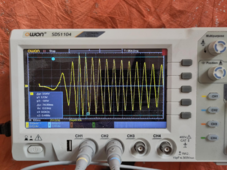brandnewb
Going for serious. starting as newb
anyway gang!!??
Did you really think I was really giving up?
Nah the true translation is that as long as I can no longer think of a new experiment I will back down on this.
------
hmm I thought of a new experiment. One that addresses the issue with the most recent findings.
You see that now it is no longer about me wanting to be special. NOW is is more about why does my findings not support my earlier findings.
screw this. I will gladly go into the books as the man that tried but failed to help science in this regard.
But I am not done yet. nah. not by a long shot I am not done yet.
Did you really think I was really giving up?
Nah the true translation is that as long as I can no longer think of a new experiment I will back down on this.
------
hmm I thought of a new experiment. One that addresses the issue with the most recent findings.
You see that now it is no longer about me wanting to be special. NOW is is more about why does my findings not support my earlier findings.
screw this. I will gladly go into the books as the man that tried but failed to help science in this regard.
But I am not done yet. nah. not by a long shot I am not done yet.








